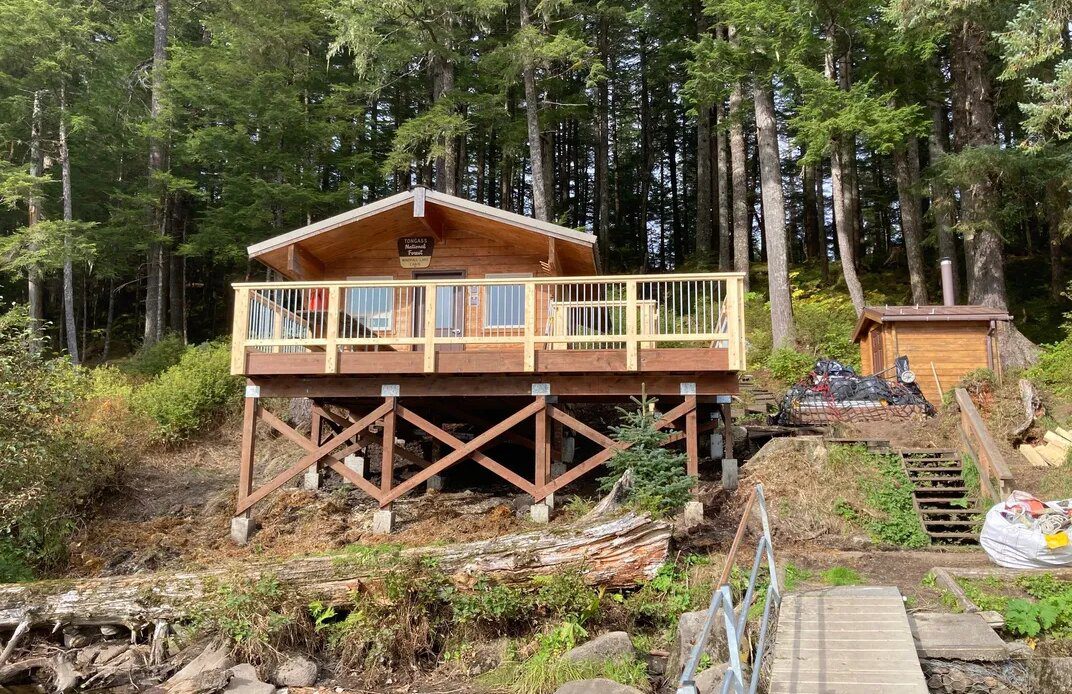In early 2023, the U.S. Forest Service announced a plan to add dozens of new public-use cabins to Alaska’s trail systems. It’s the biggest cabin expansion project in Alaska in the last 50 years—and it stands to make the state’s wilderness even more accessible to hikers looking for lightweight, long-distance travel.
Dubbed the Alaska Cabins Project, the initiative is a partnership between the U.S. Forest Service and the nonprofit National Forest Foundation (NFF). Together, the two organizations aim to repair 10 existing huts and add 25 more to the Chugach and Tongass National Forests. Already, Alaska’s huts have made outdoor recreation possible in a region where the weather and wildlife usually deter all but the savviest adventurers. Thanks to the existing cabins, families and novice hikers alike have been able to enjoy a night out in the Alaskan wilderness—without having to worry about torrential rain or grizzlies.
“They’re amazing,” says Patrick Shannon, the NFF’s Pacific Northwest and Alaska director, who stayed in the Windfall Lake Cabin outside of Juneau this summer. “You hike about three miles through the rainforest to get there. The Forest Service provides a canoe and a rowboat, so you can go out onto the lake. And unlike with [European-style] huts, you reserve it for a night, so it’s yours. People are allowed to come in during the day if they need to dry off, but at night, you have it to yourself.”
Windfall Lake Cabin is located outside of Juneau.
U.S. Forest Service
A long legacy of Alaskan huts
Right now, about 200 cabins are scattered throughout the Chugach and Tongass National Forests, which together comprise millions of acres of densely vegetated landscape. The state’s first huts were erected in the 1920s as part of an effort to get more people comfortably recreating in the state’s vast public lands, according to James King, the U.S. Forest Service’s Alaska region director of recreation, land and minerals.
Then, in the 1930s, Franklin Delano Roosevelt launched the Civilian Conservation Corps (CCC) to put Americans back to work during the Great Depression, and the cabin-building campaign went into overdrive.* Over the next decade, CCC crews built dozens of cabins in the Chugach and Tongass National Forests and hundreds more in the Lower 48. However, few of these CCC cabins ever became hut-to-hut systems. At the time, the focus…
Click Here to Read the Full Original Article at Travel | smithsonianmag.com…
